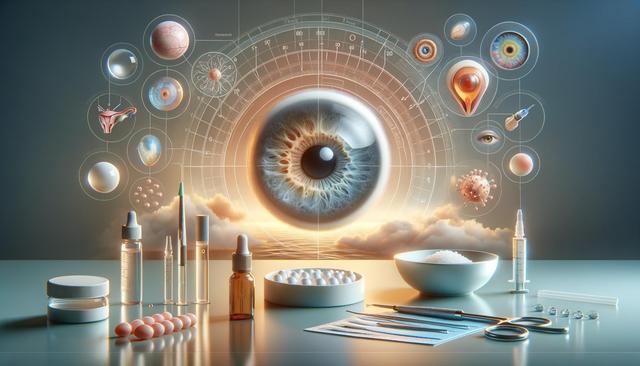Recognizing Glaucoma Symptoms and Causes
Glaucoma is often referred to as the “silent thief of sight” because it typically progresses without noticeable symptoms in its early stages. By the time most individuals notice vision changes, significant damage may have already occurred. Understanding glaucoma symptoms and causes is crucial for early detection and prevention. Common early symptoms may include blurred vision, eye pain, halos around lights, and gradual loss of peripheral vision. In some cases, symptoms such as nausea and severe eye pain may indicate acute angle-closure glaucoma, a medical emergency that requires immediate treatment.
The primary cause of glaucoma is increased intraocular pressure (IOP), which can damage the optic nerve over time. This pressure often results from a buildup of fluid within the eye. However, glaucoma can also occur with normal eye pressure, a form known as normal-tension glaucoma. Other risk factors include age (especially over 60), family history, diabetes, high blood pressure, and prolonged use of corticosteroid medications. Recognizing these risk factors can help individuals take preventive steps, including regular eye exams.
Exploring Glaucoma Treatment and Management Options
Once diagnosed, effective glaucoma treatment and management options are essential to slow or halt the progression of the disease. Treatment typically focuses on lowering intraocular pressure to prevent further optic nerve damage. The choice of treatment depends on the type and severity of glaucoma and may include a combination of medications, laser therapy, and surgery.
Here are some common treatment avenues:
- Eye drops for glaucoma: These are often the first line of defense, helping to reduce eye pressure by decreasing fluid production or increasing drainage.
- Oral medications: Sometimes used in conjunction with eye drops to enhance pressure control.
- Laser therapy: Procedures like selective laser trabeculoplasty (SLT) can improve fluid drainage in open-angle glaucoma.
- Surgical interventions: In advanced cases, surgeries such as trabeculectomy or the insertion of drainage devices may be necessary.
Regular monitoring of eye pressure, visual fields, and optic nerve health is vital. An individualized treatment plan crafted with an eye care specialist can make a significant difference in long-term outcomes.
The Role of Glasses for Glaucoma and Supporting Aids
While traditional glasses cannot treat glaucoma directly, they can play a supportive role in managing vision loss caused by the condition. Glasses for glaucoma are often designed with special features to enhance remaining vision and complement other treatment strategies. For example, lenses with tints or filters can reduce glare, which is a common complaint among glaucoma patients.
Low-vision aids may also help individuals maintain independence and quality of life. These may include:
- Magnifying glasses
- High-contrast lenses
- Field expansion lenses
- Electronic visual aids
It’s essential to consult with a low-vision specialist to determine the most appropriate visual aids based on the extent and type of vision loss. These tools, when used in conjunction with medical treatments, can significantly improve daily functioning and comfort.
Eye Drops and Eye Exercises for Glaucoma
Eye drops for glaucoma are a cornerstone of medical treatment and are prescribed to reduce intraocular pressure. They work by either decreasing the production of aqueous humor (the fluid inside the eye) or increasing its outflow. Consistent use of these medications is critical, even when symptoms are not noticeable, as glaucoma damage is irreversible but preventable with proper management.
In addition to pharmacological treatments, some eye care professionals suggest integrating eye exercises for glaucoma as a supplementary approach. While these exercises are not a replacement for medical treatment, they may support overall eye health and relieve eye strain. Examples include:
- Palming: Gently covering the eyes with the palms to relax them.
- Focus shifting: Alternating focus between near and far objects to improve flexibility.
- Blinking exercises: Encouraging moisture and reducing dryness.
Though scientific evidence supporting these exercises for glaucoma management is limited, they are generally harmless and may contribute to eye comfort and wellness when practiced regularly.
Innovations: New Glaucoma Treatments and Technologies
The field of ophthalmology continues to evolve, offering new glaucoma treatments and promising technological advancements aimed at improving patient outcomes. These innovations focus on early detection, less invasive therapies, and more effective long-term management strategies.
Some notable developments include:
- Minimally invasive glaucoma surgeries (MIGS): These procedures offer quicker recovery times and fewer complications compared to traditional surgeries.
- Drug delivery implants: Sustained-release devices placed in or around the eye to provide consistent medication over months.
- Smart contact lenses: Equipped with micro-sensors to monitor intraocular pressure in real time.
- New technology for glaucoma diagnostics: Tools like optical coherence tomography (OCT) and advanced visual field tests help detect changes earlier and more accurately.
These advancements are shaping a future where glaucoma can be managed more proactively, reducing the risk of vision loss. Patients are encouraged to stay informed and discuss emerging options with their ophthalmologists to ensure they are receiving the most up-to-date care available.
Conclusion: Managing Glaucoma with a Proactive Approach
For individuals at risk of or diagnosed with glaucoma, understanding the condition and embracing a comprehensive management strategy is key. From identifying glaucoma symptoms and causes early on to exploring the wide range of glaucoma treatment and management options, staying informed empowers patients to take control of their eye health. Utilizing glasses for glaucoma, adhering to eye drops regimens, considering eye exercises, and exploring new glaucoma treatments and technologies can all contribute to preserving vision and improving quality of life. Regular check-ups and open communication with healthcare providers remain the foundation of effective glaucoma care.




Leave a Reply